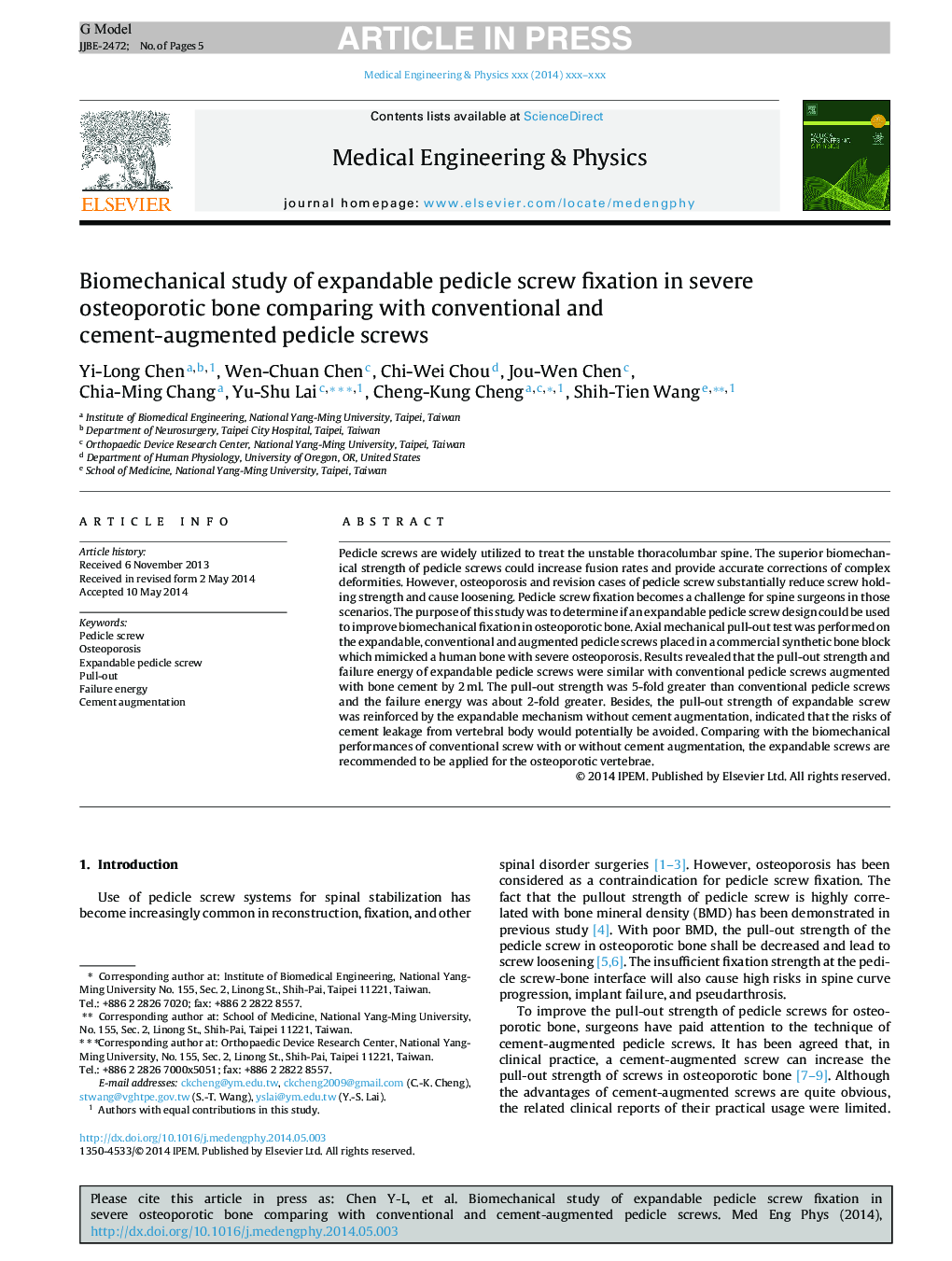| Article ID | Journal | Published Year | Pages | File Type |
|---|---|---|---|---|
| 10435060 | Medical Engineering & Physics | 2014 | 5 Pages |
Abstract
Pedicle screws are widely utilized to treat the unstable thoracolumbar spine. The superior biomechanical strength of pedicle screws could increase fusion rates and provide accurate corrections of complex deformities. However, osteoporosis and revision cases of pedicle screw substantially reduce screw holding strength and cause loosening. Pedicle screw fixation becomes a challenge for spine surgeons in those scenarios. The purpose of this study was to determine if an expandable pedicle screw design could be used to improve biomechanical fixation in osteoporotic bone. Axial mechanical pull-out test was performed on the expandable, conventional and augmented pedicle screws placed in a commercial synthetic bone block which mimicked a human bone with severe osteoporosis. Results revealed that the pull-out strength and failure energy of expandable pedicle screws were similar with conventional pedicle screws augmented with bone cement by 2Â ml. The pull-out strength was 5-fold greater than conventional pedicle screws and the failure energy was about 2-fold greater. Besides, the pull-out strength of expandable screw was reinforced by the expandable mechanism without cement augmentation, indicated that the risks of cement leakage from vertebral body would potentially be avoided. Comparing with the biomechanical performances of conventional screw with or without cement augmentation, the expandable screws are recommended to be applied for the osteoporotic vertebrae.
Related Topics
Physical Sciences and Engineering
Engineering
Biomedical Engineering
Authors
Yi-Long Chen, Wen-Chuan Chen, Chi-Wei Chou, Jou-Wen Chen, Chia-Ming Chang, Yu-Shu Lai, Cheng-Kung Cheng, Shih-Tien Wang,
